Wild Almond tree
Scientific name: Sterculia foetida
POWO Status: Tree
IUCN Red List threat level: Least Concern
GPS Location: 17° 42′ 56.62″ N, 64° 49′ 46.39″ W
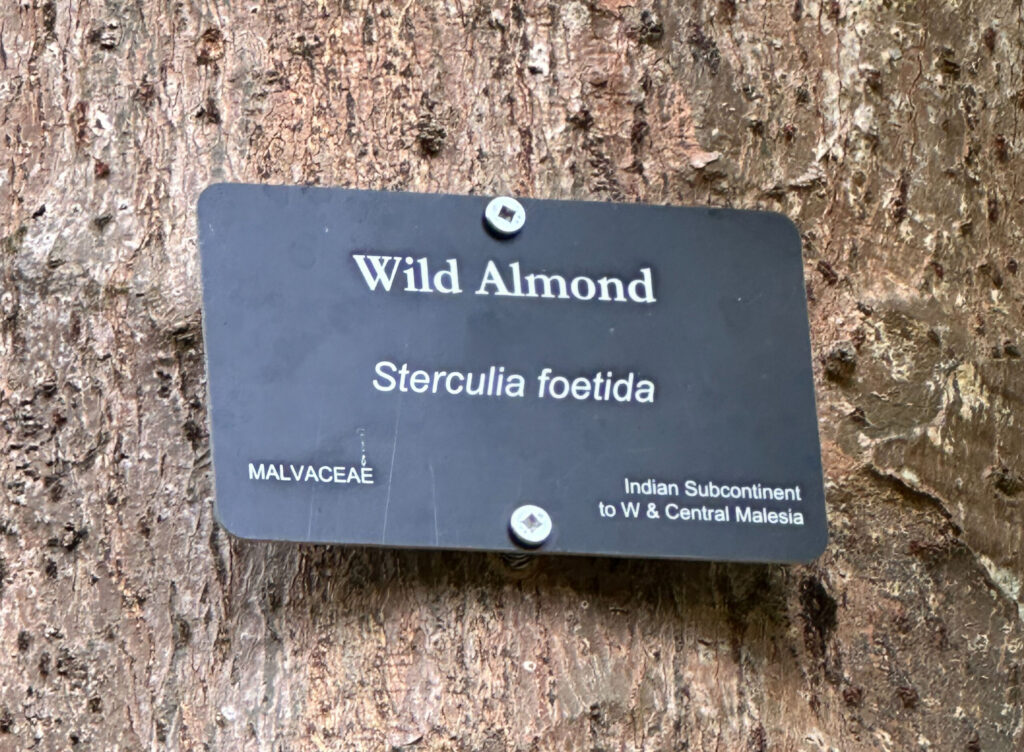
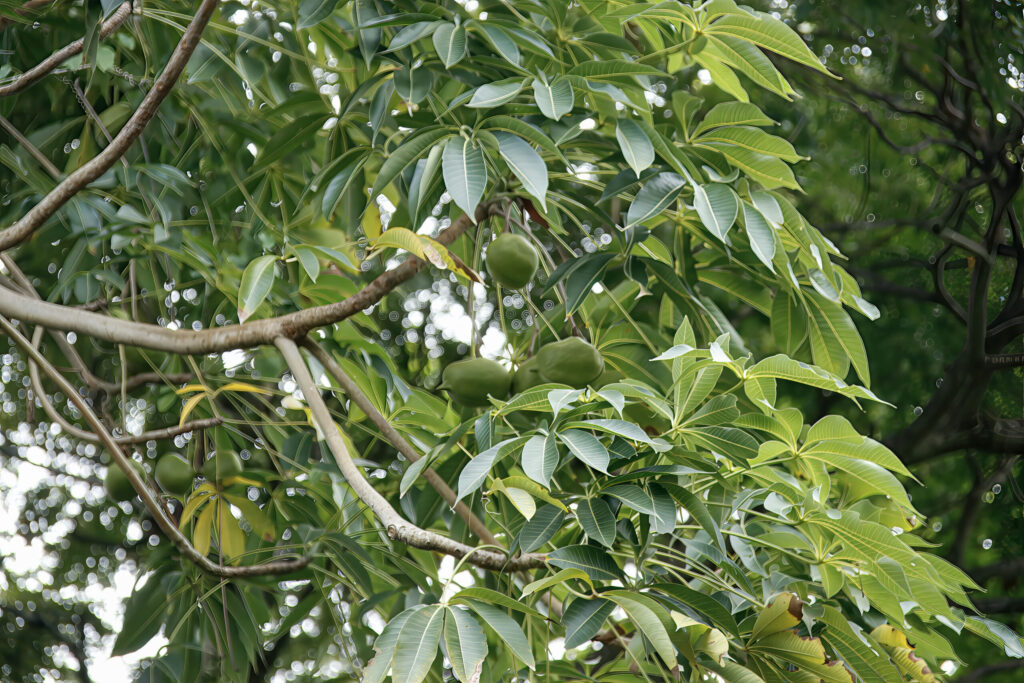
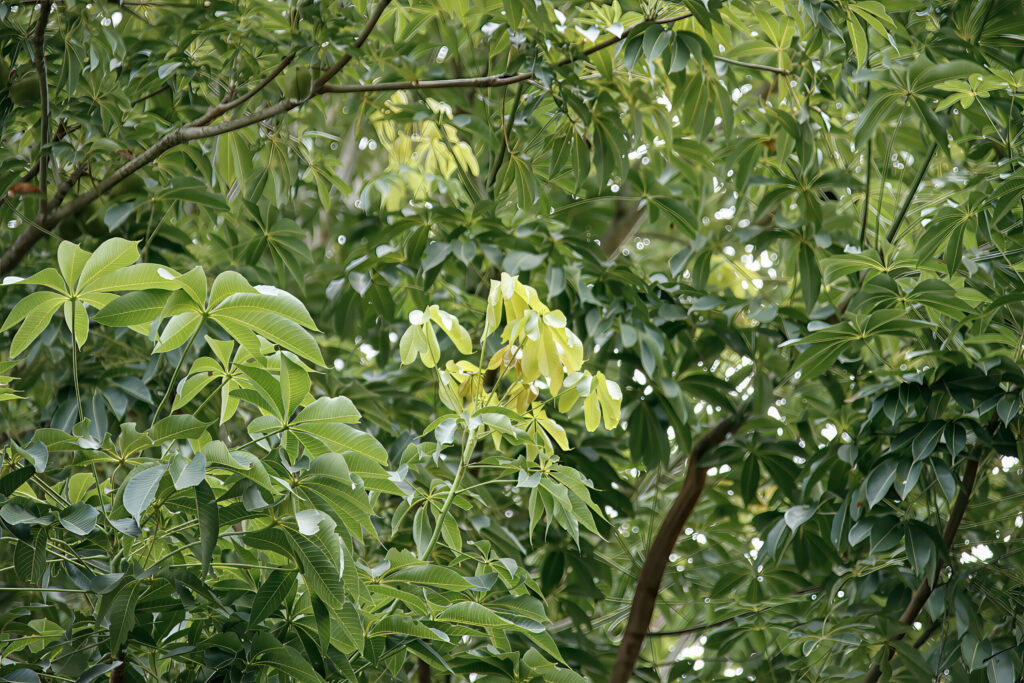
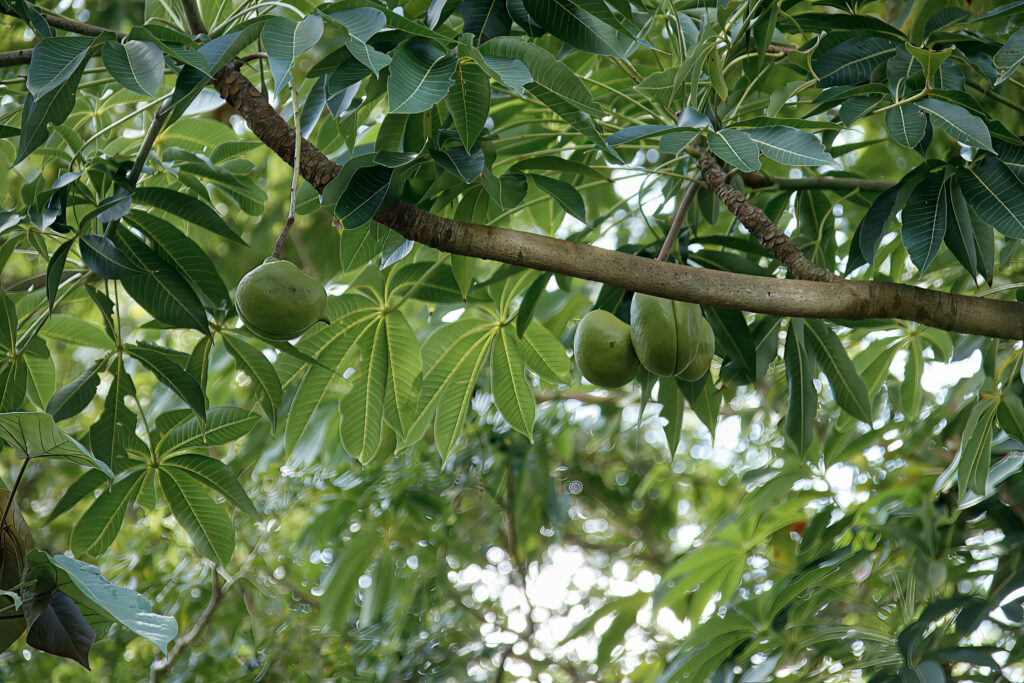
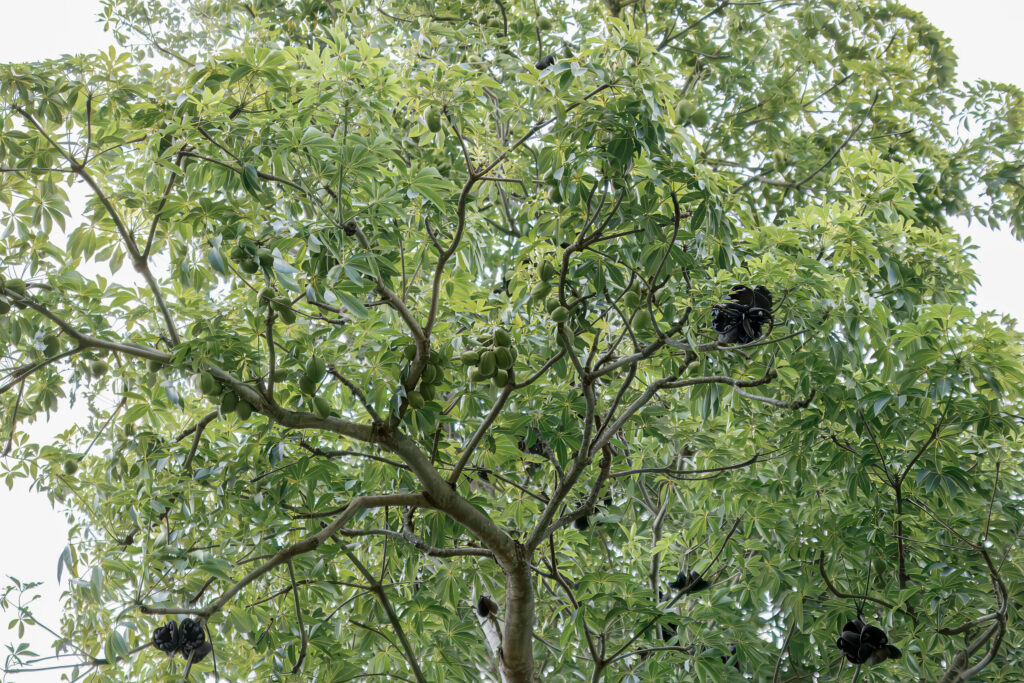
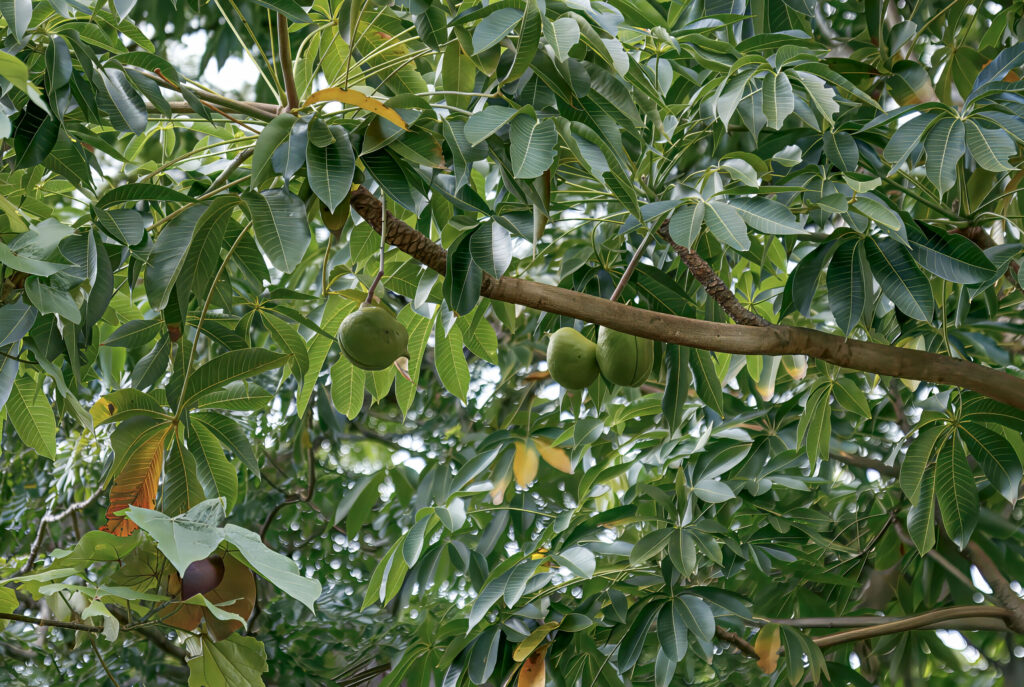
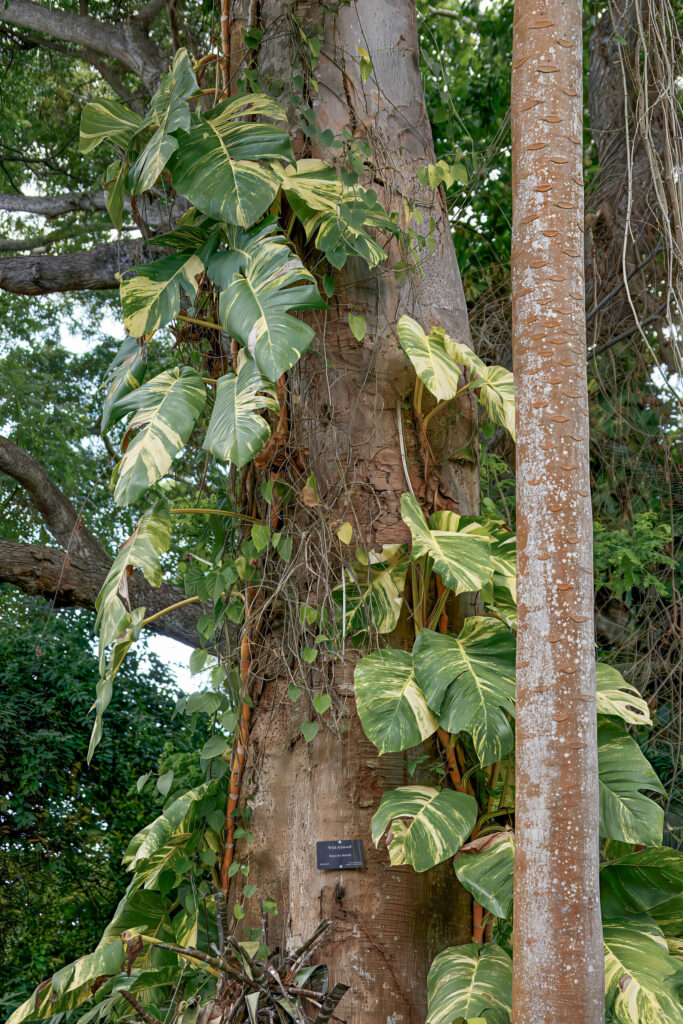

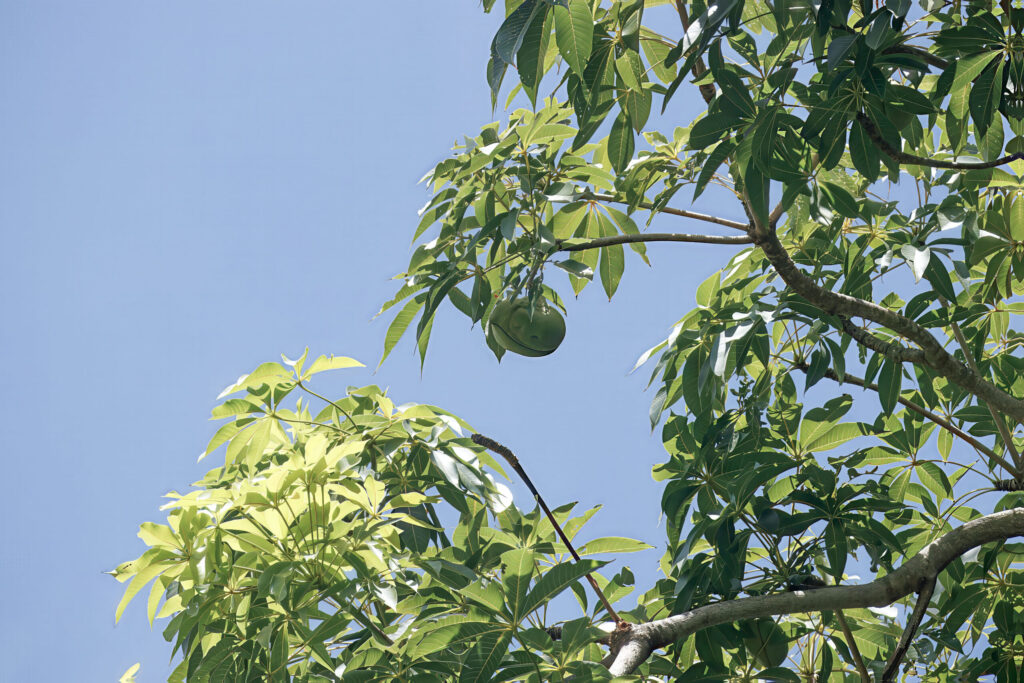
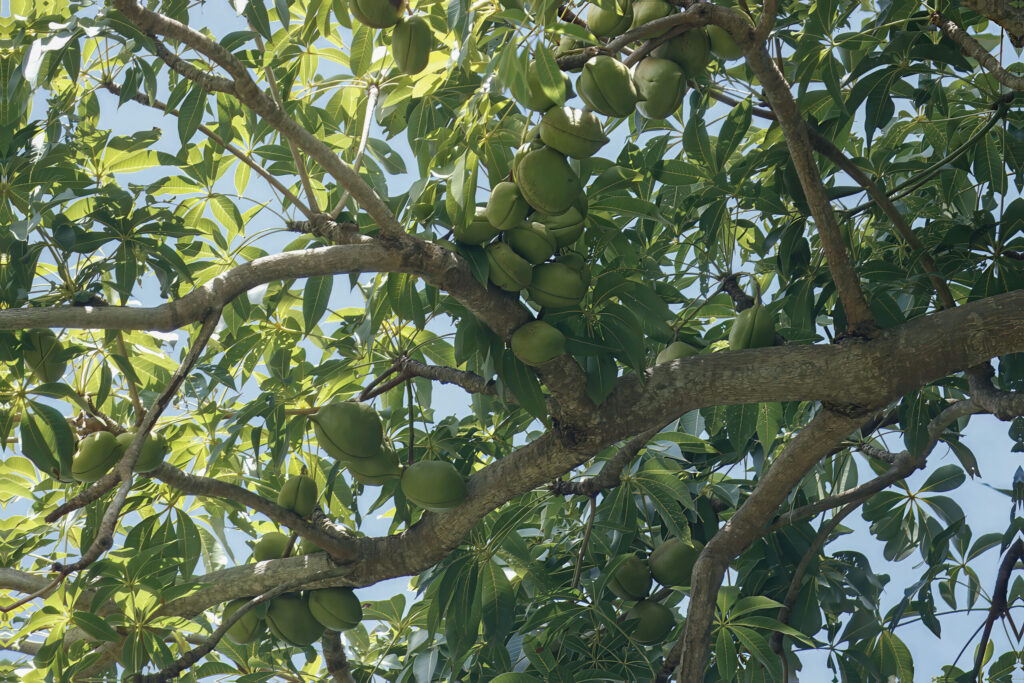
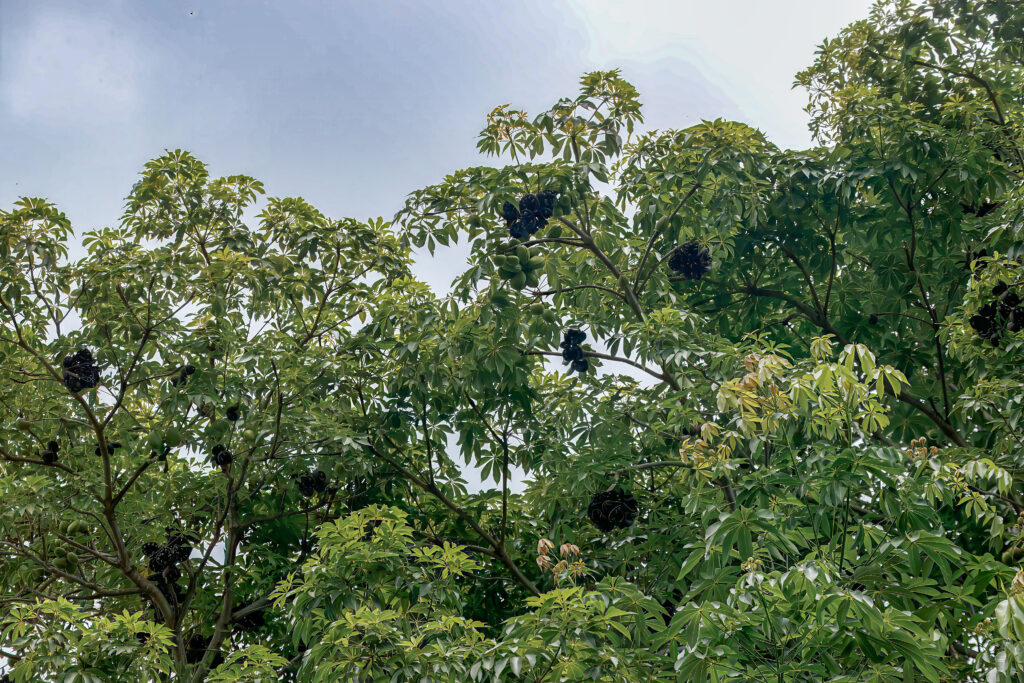
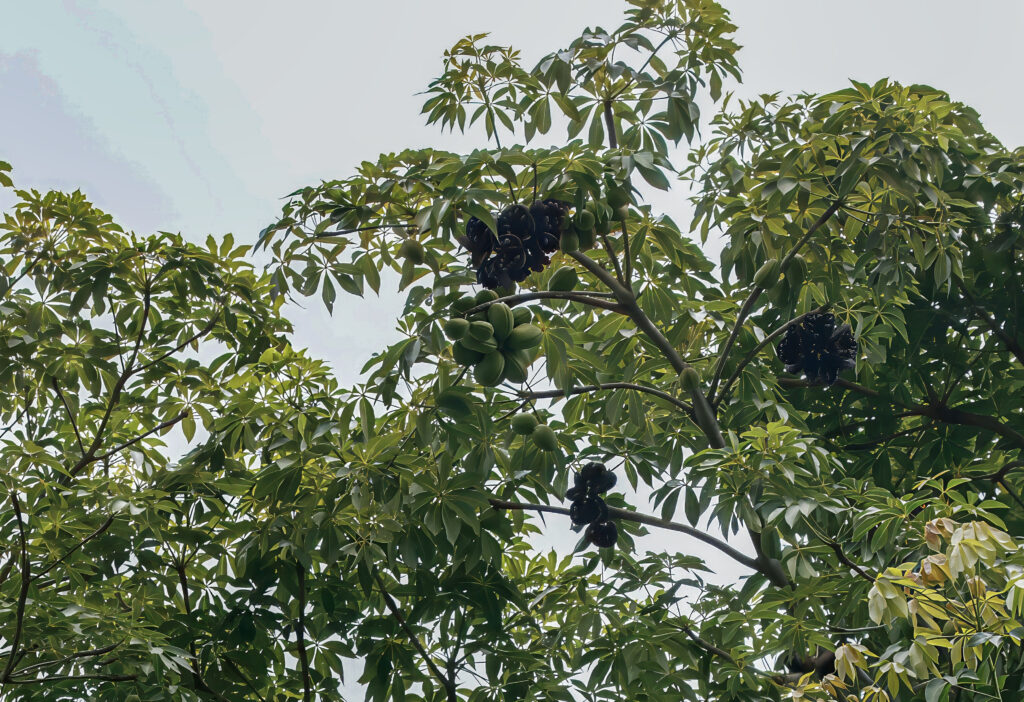
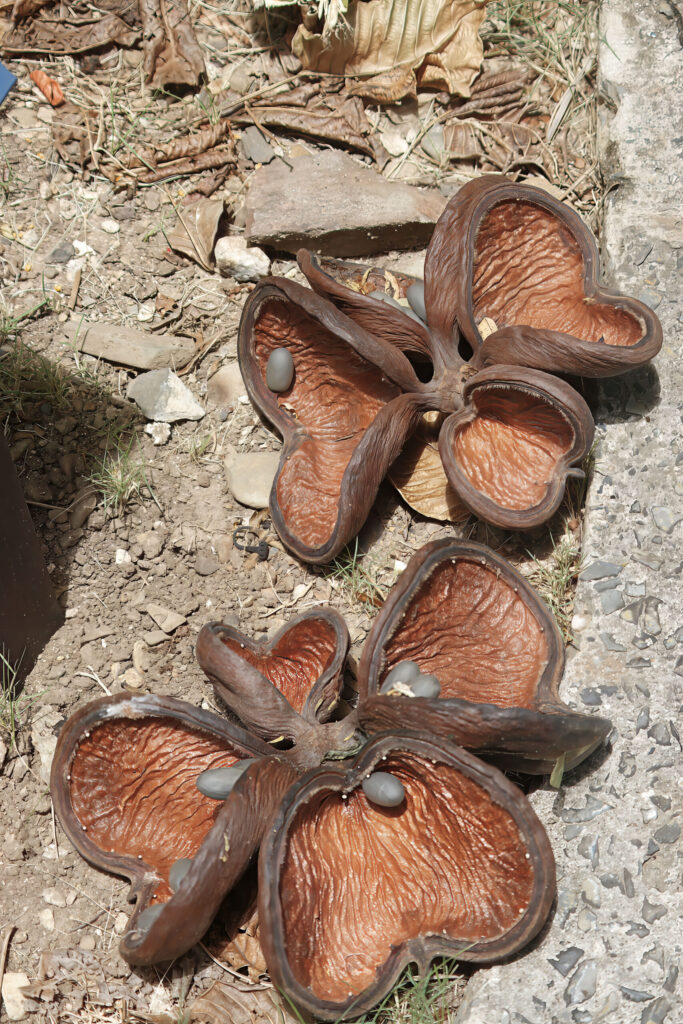
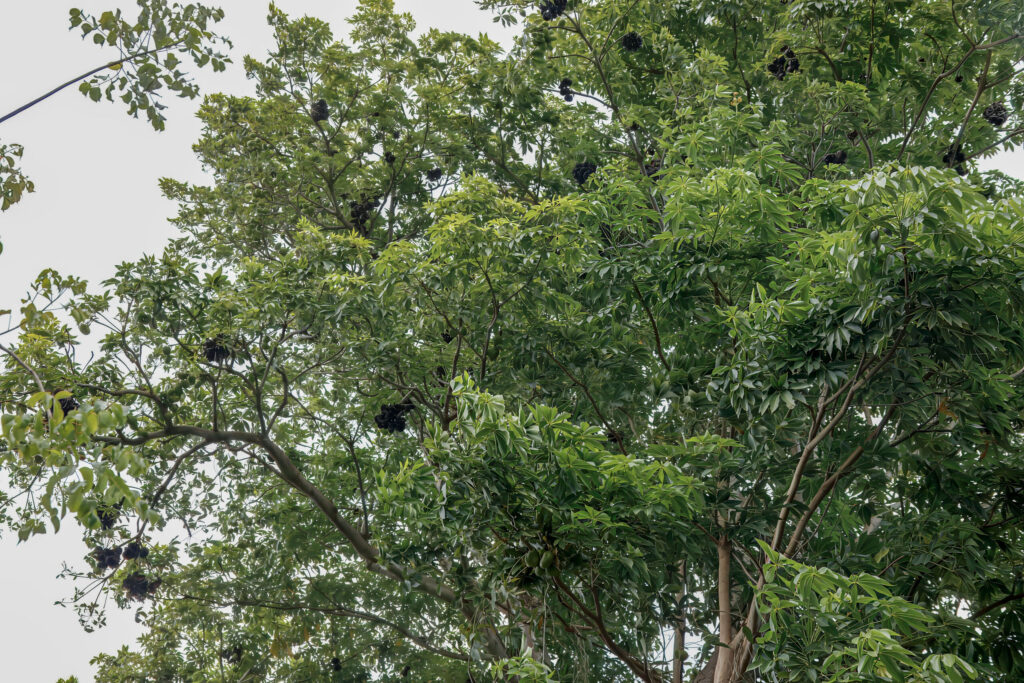
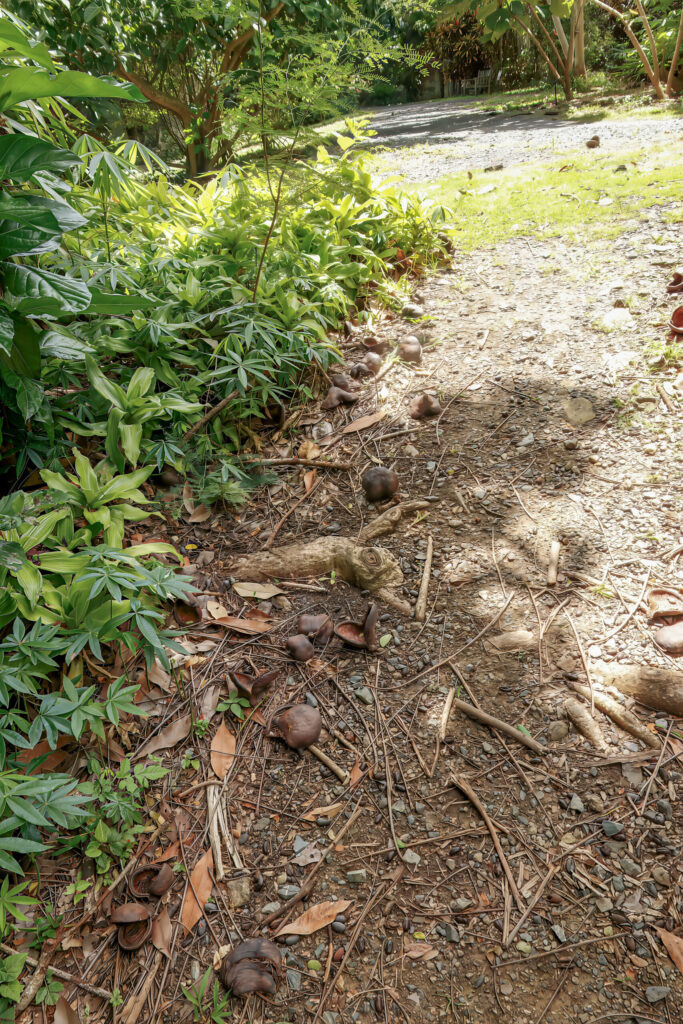
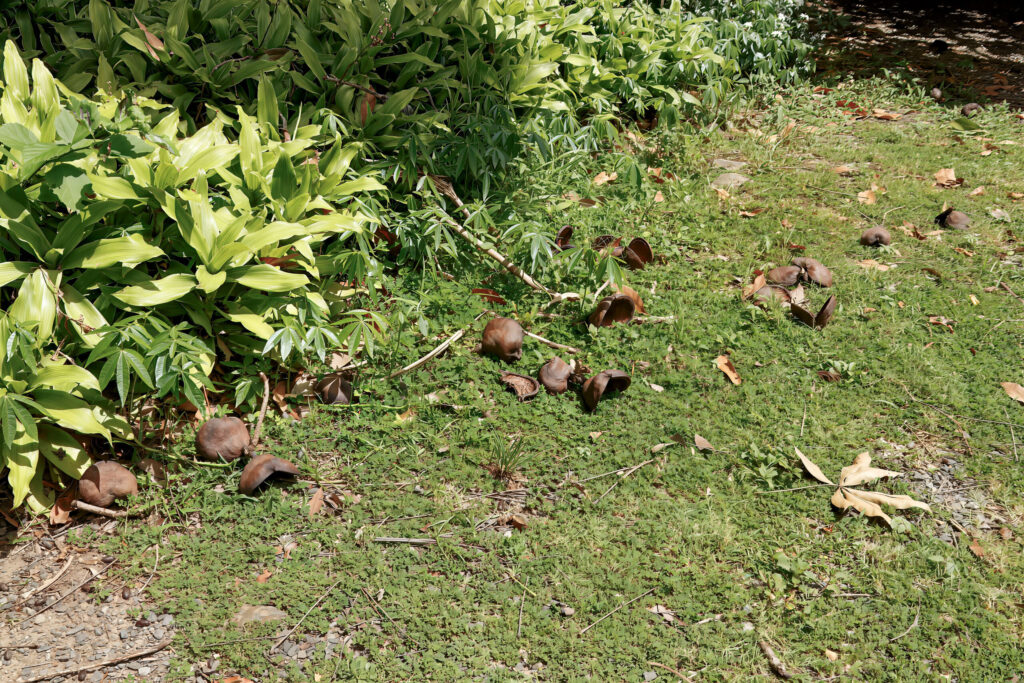

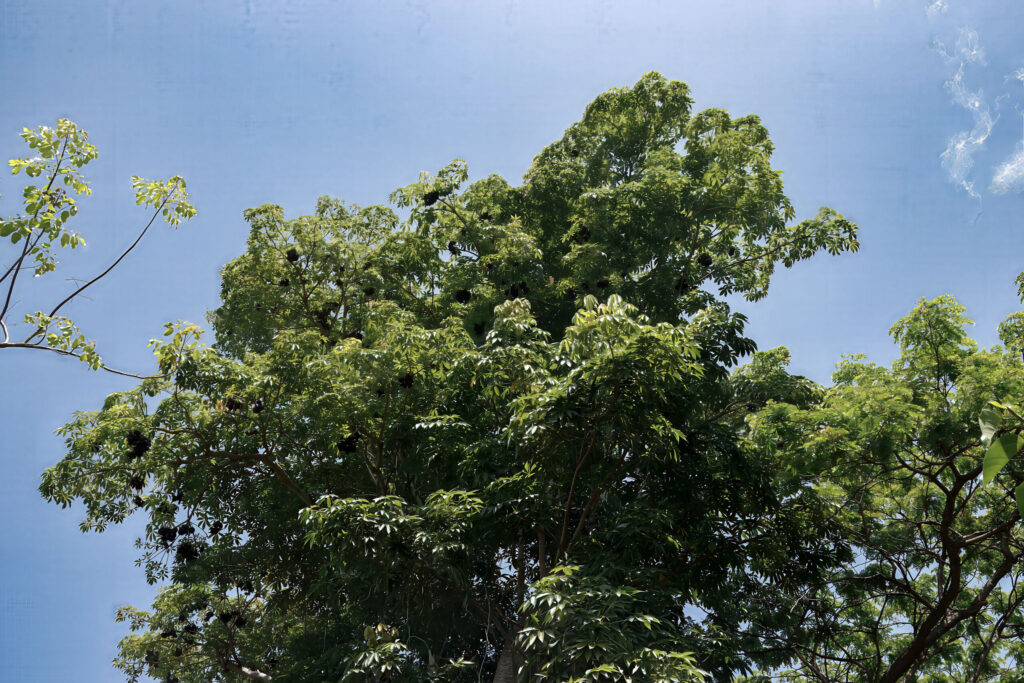
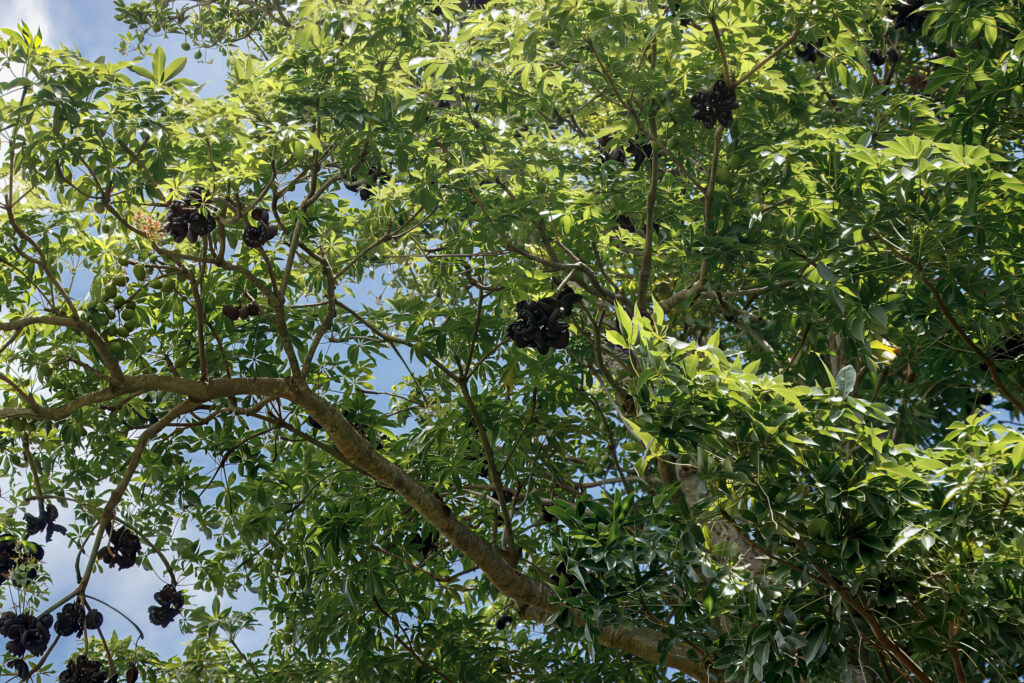
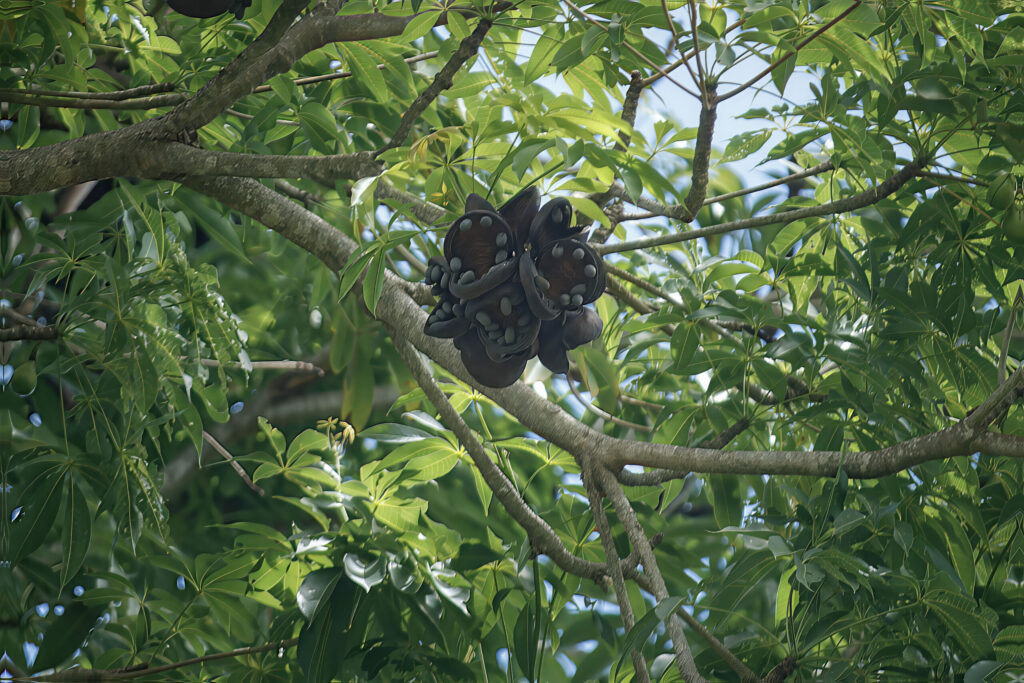
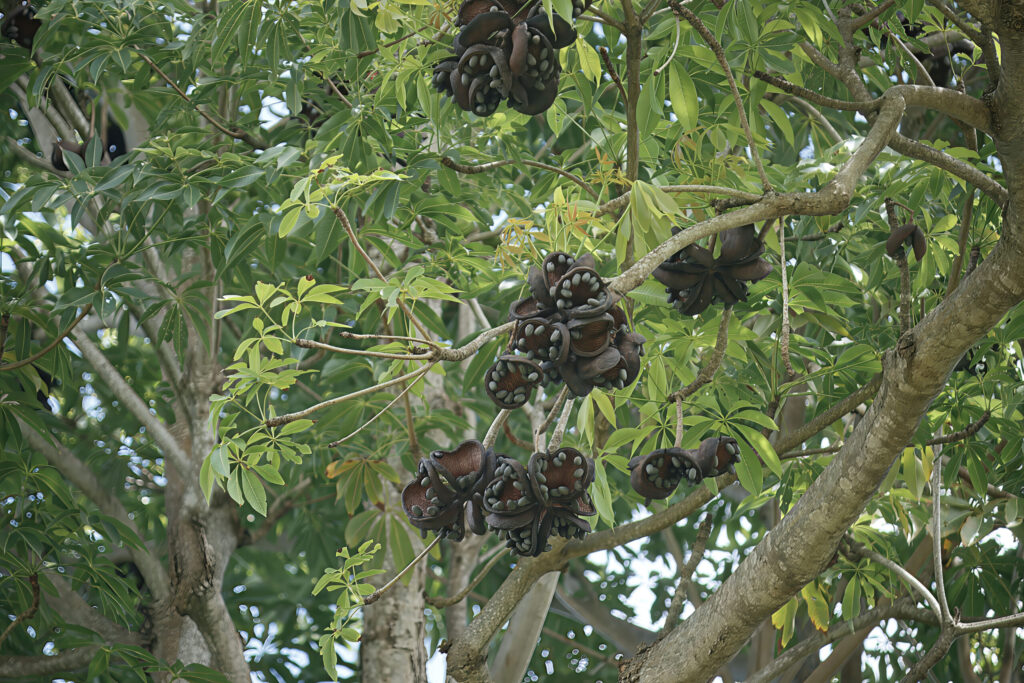
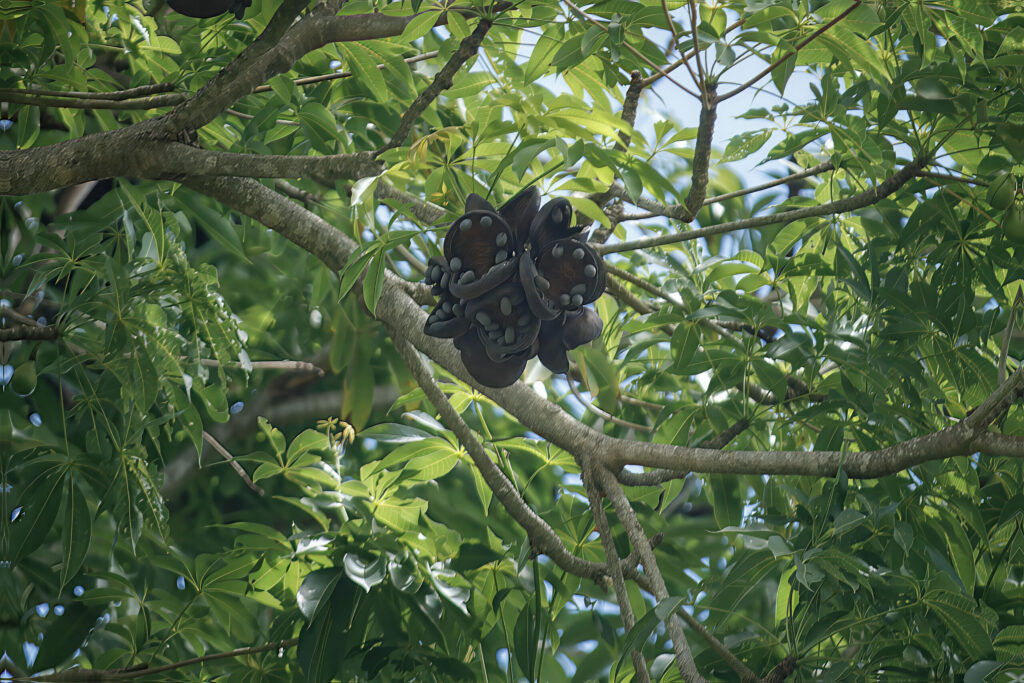
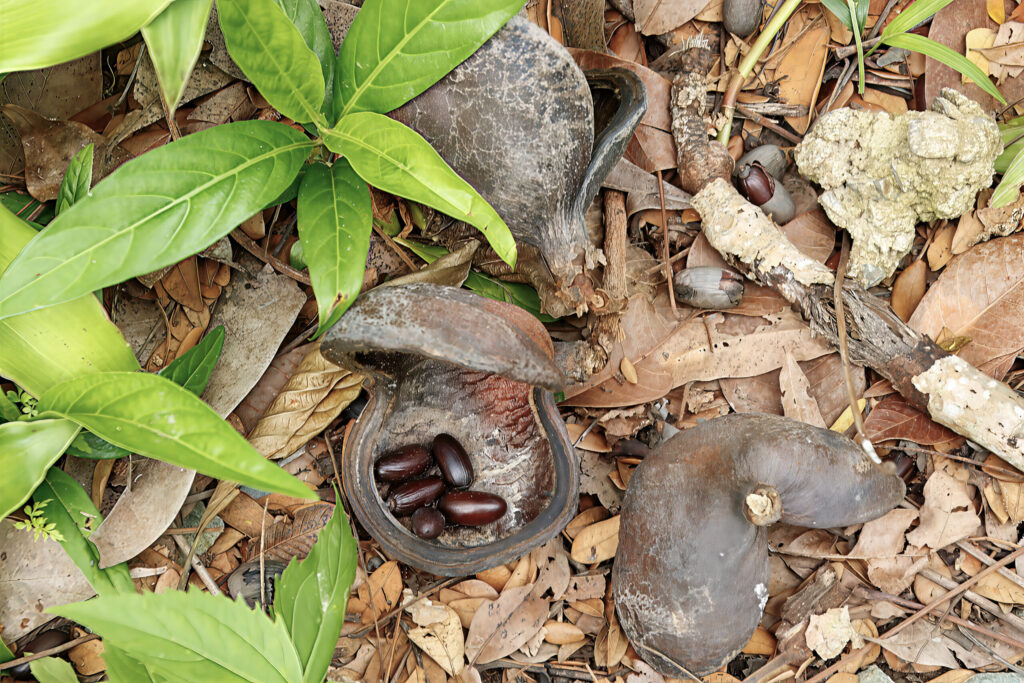
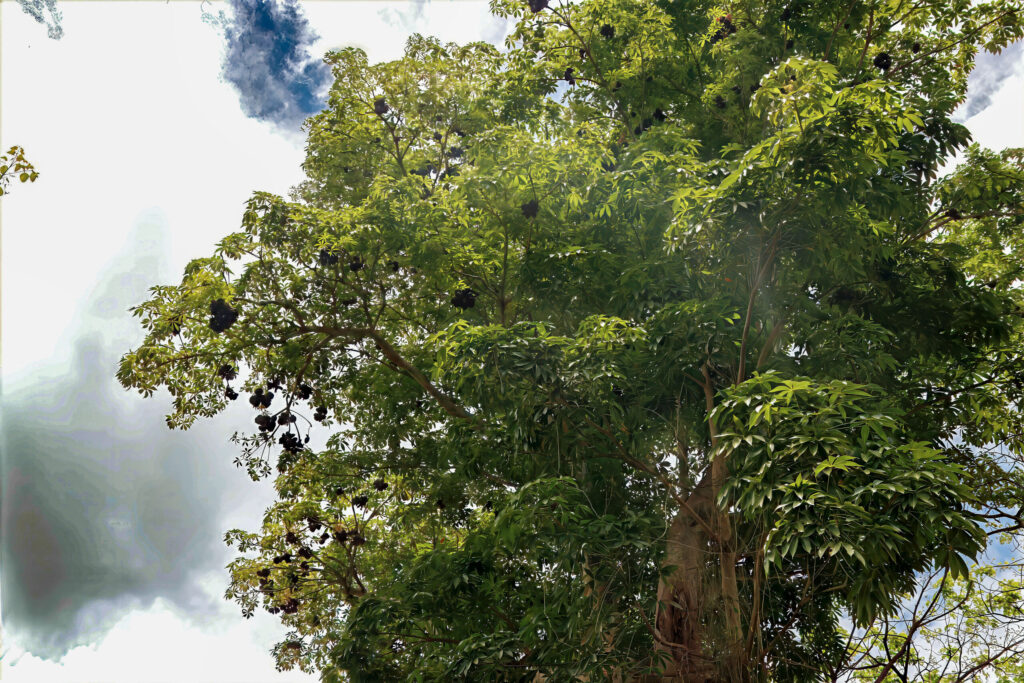
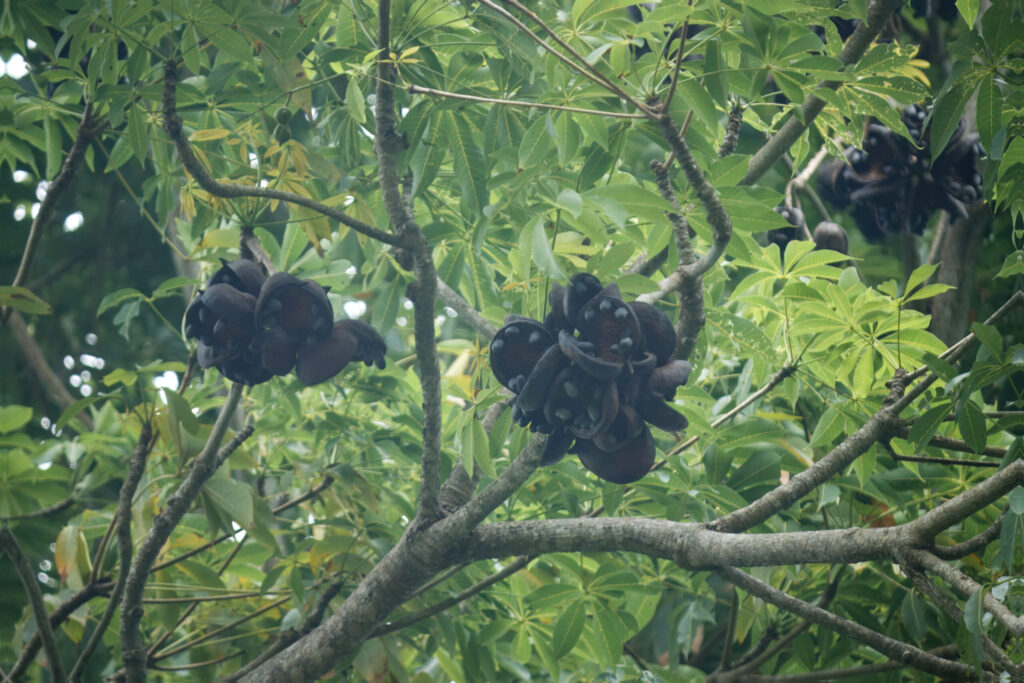
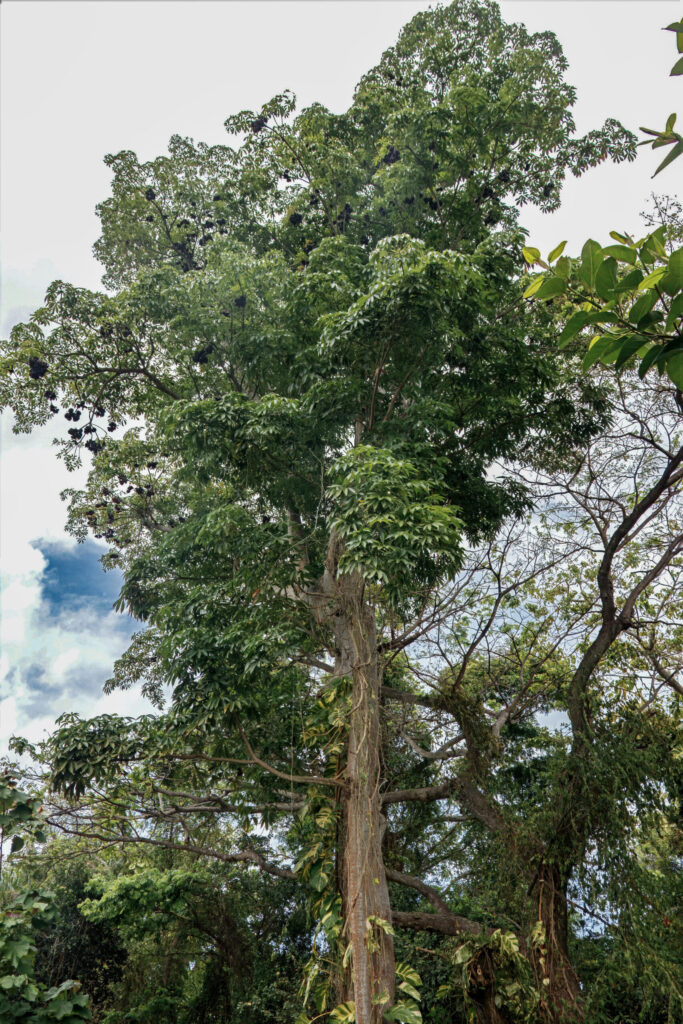
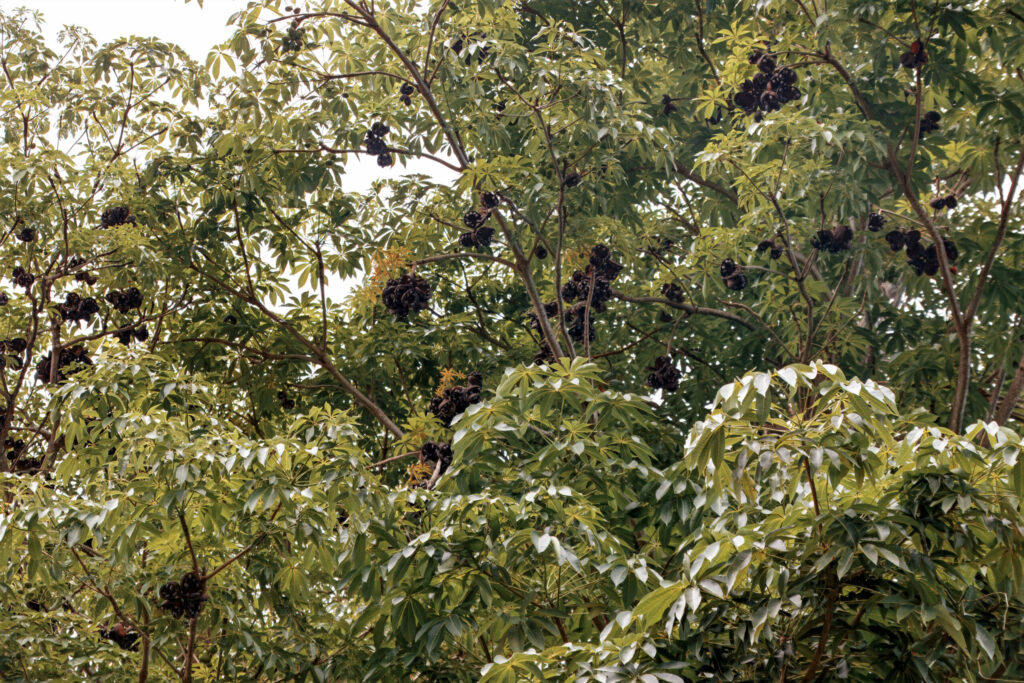
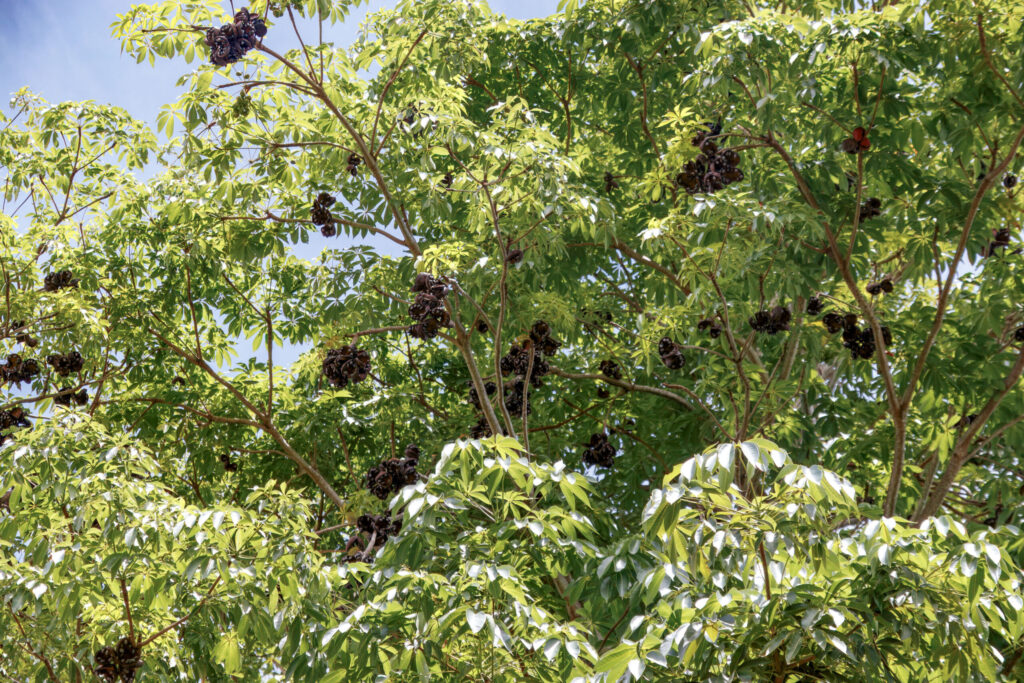
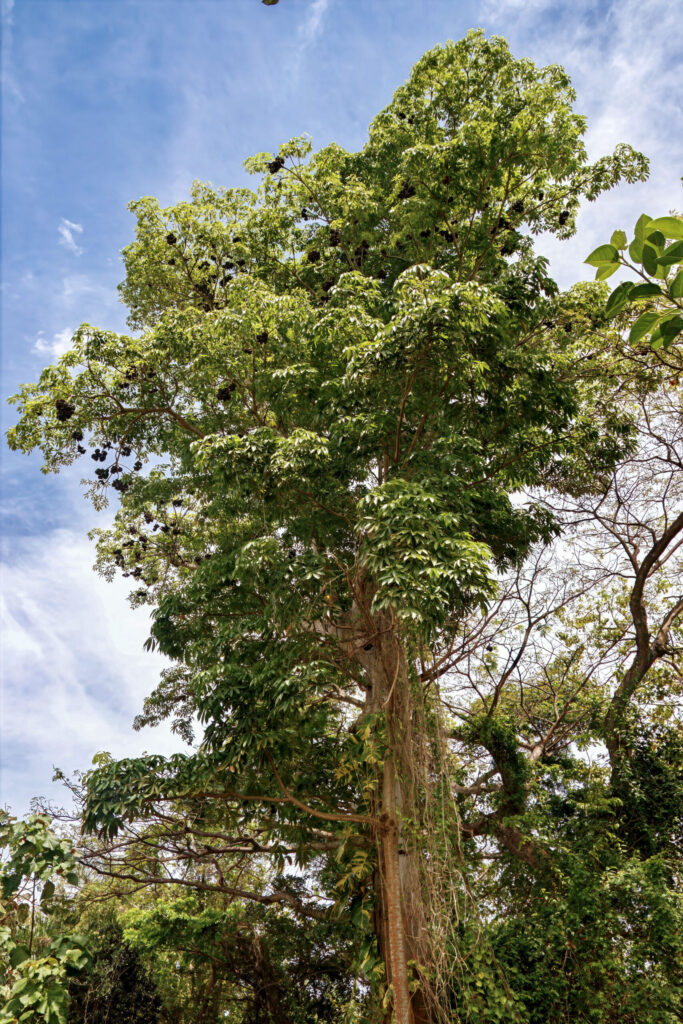
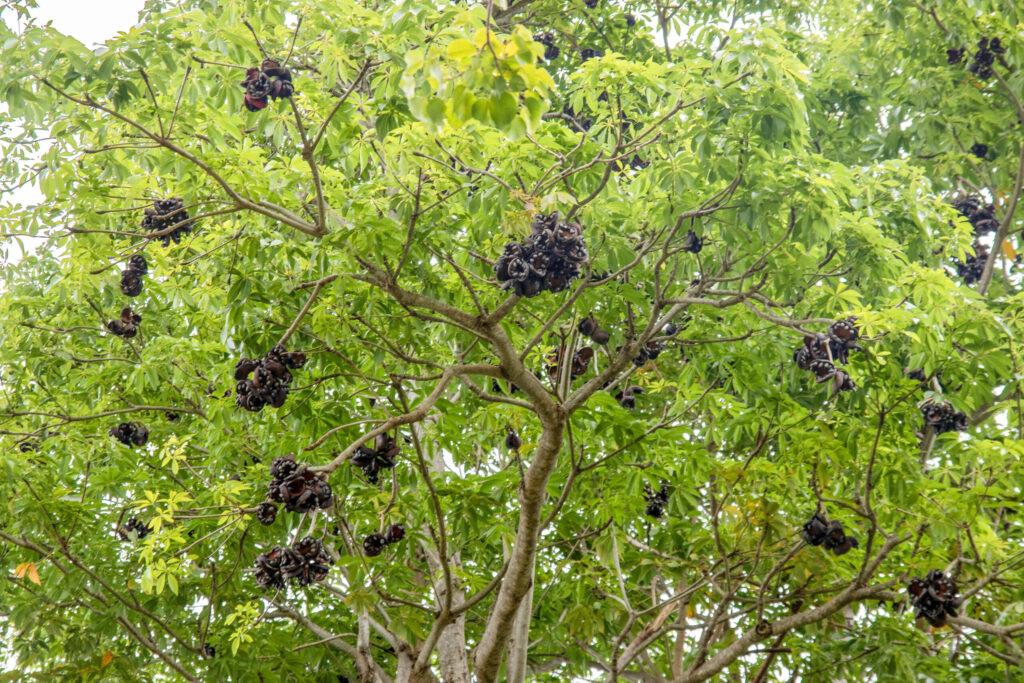
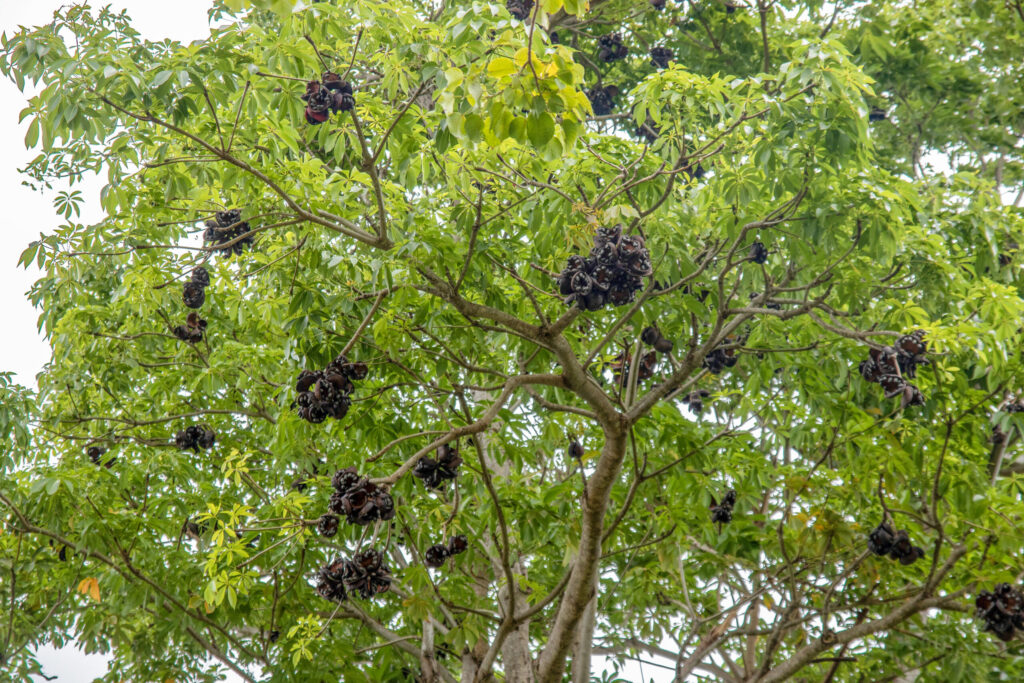
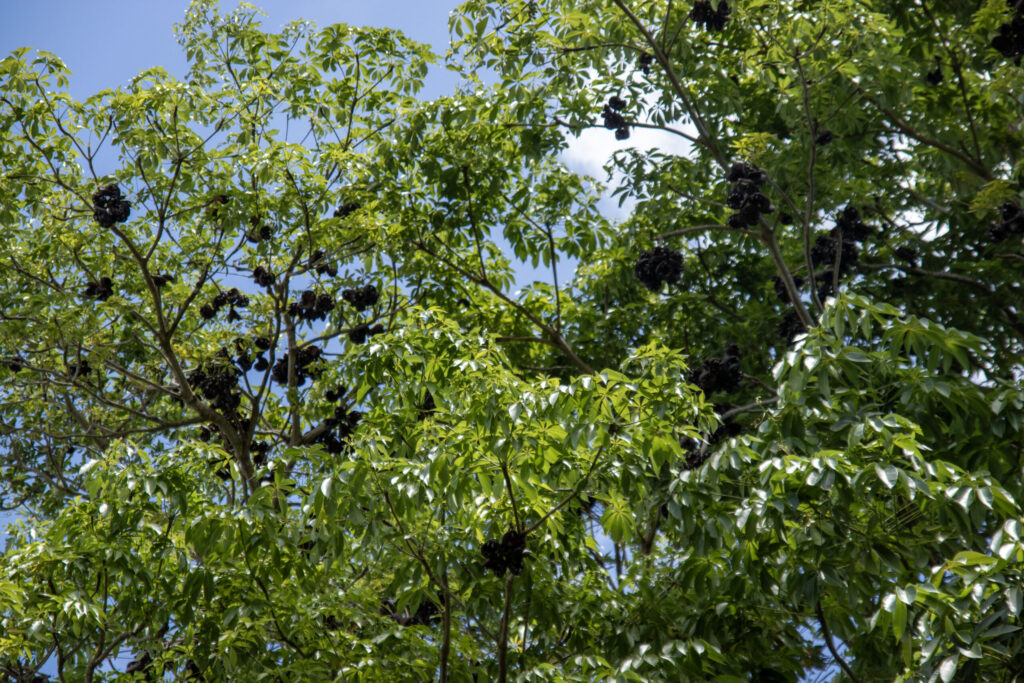

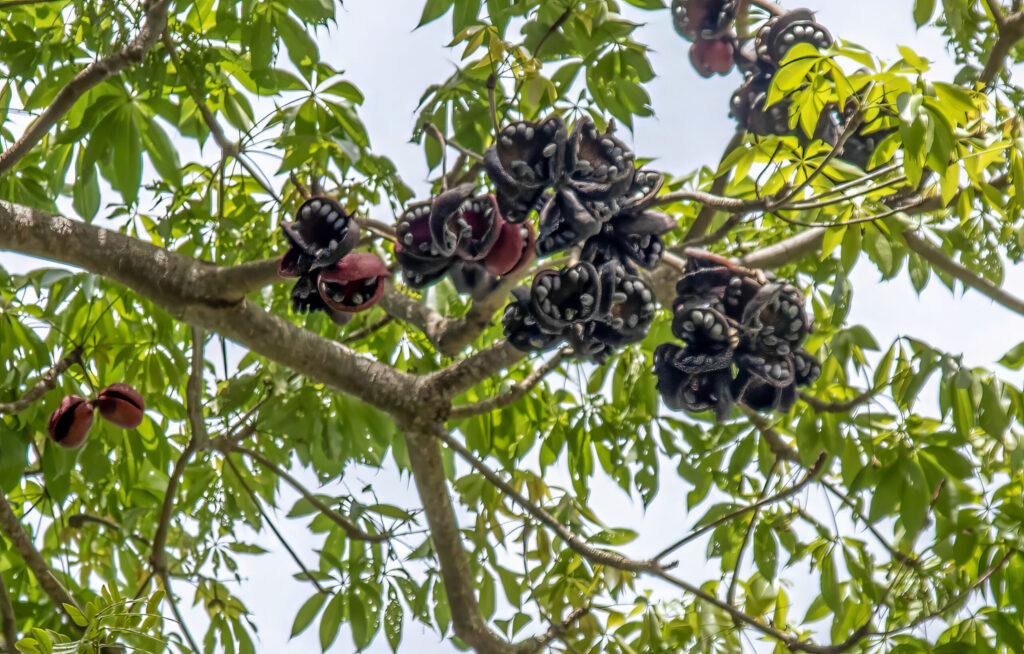
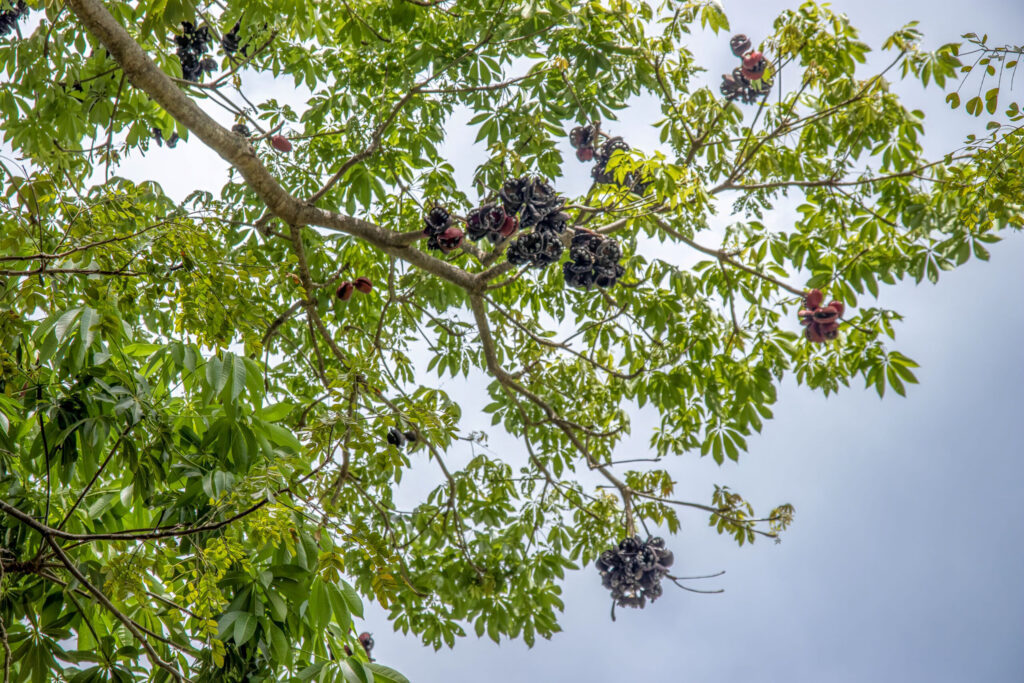
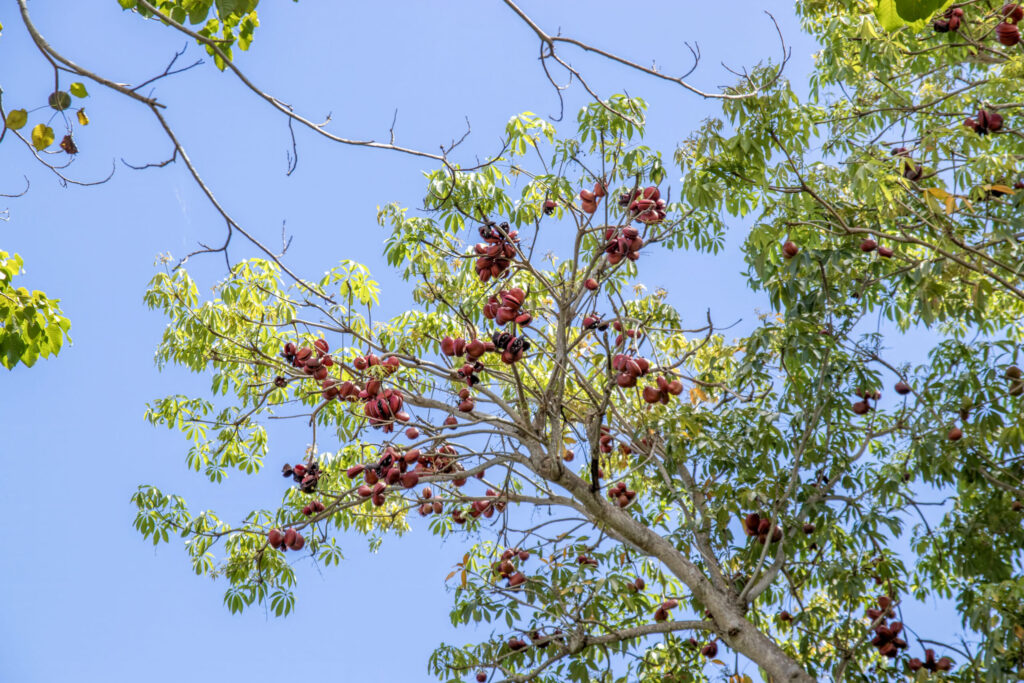
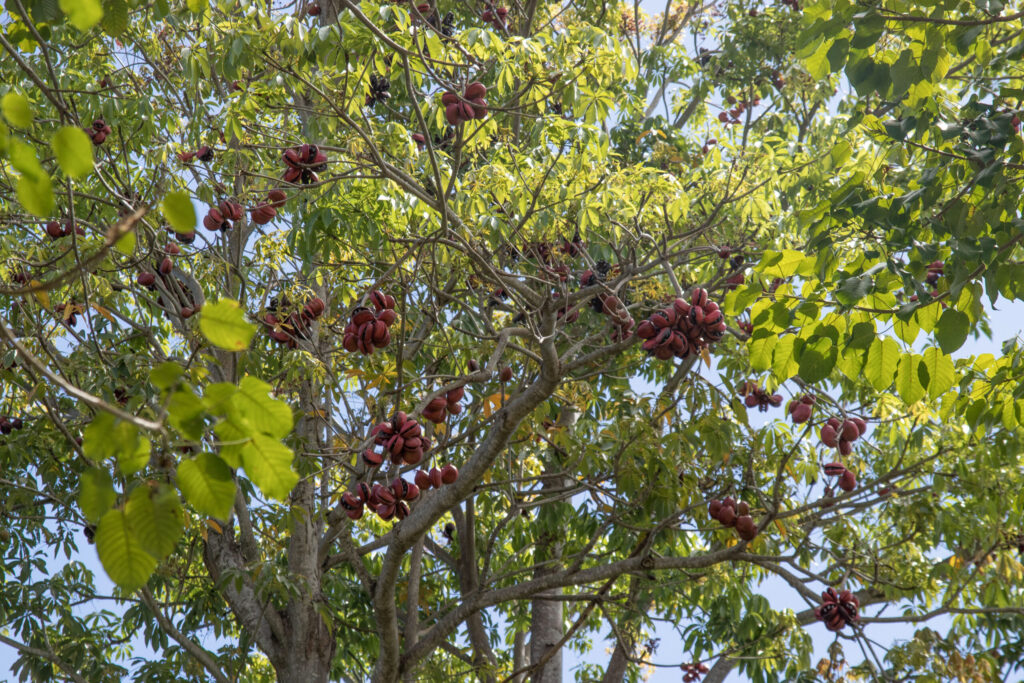
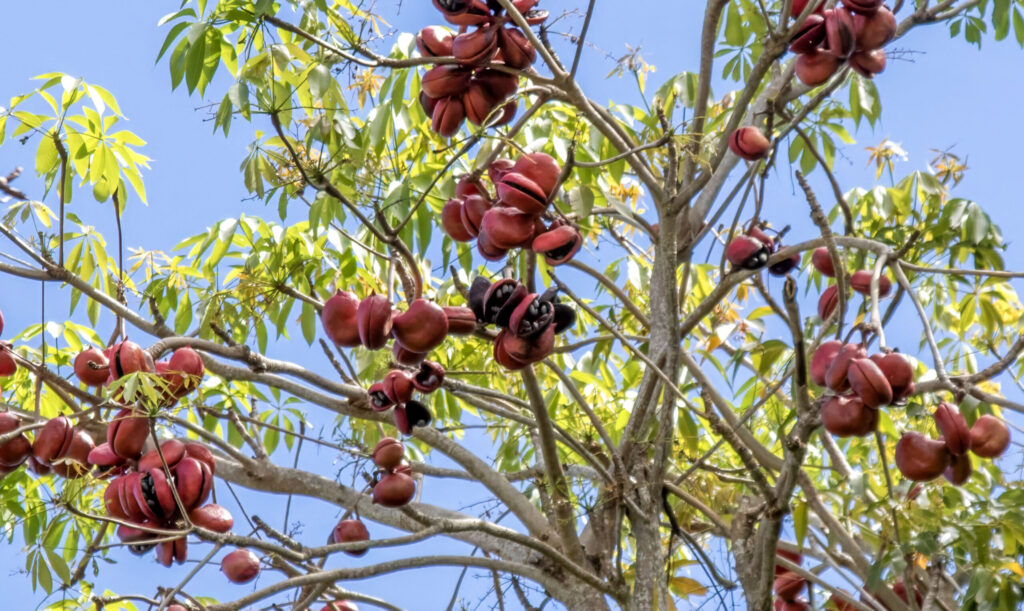
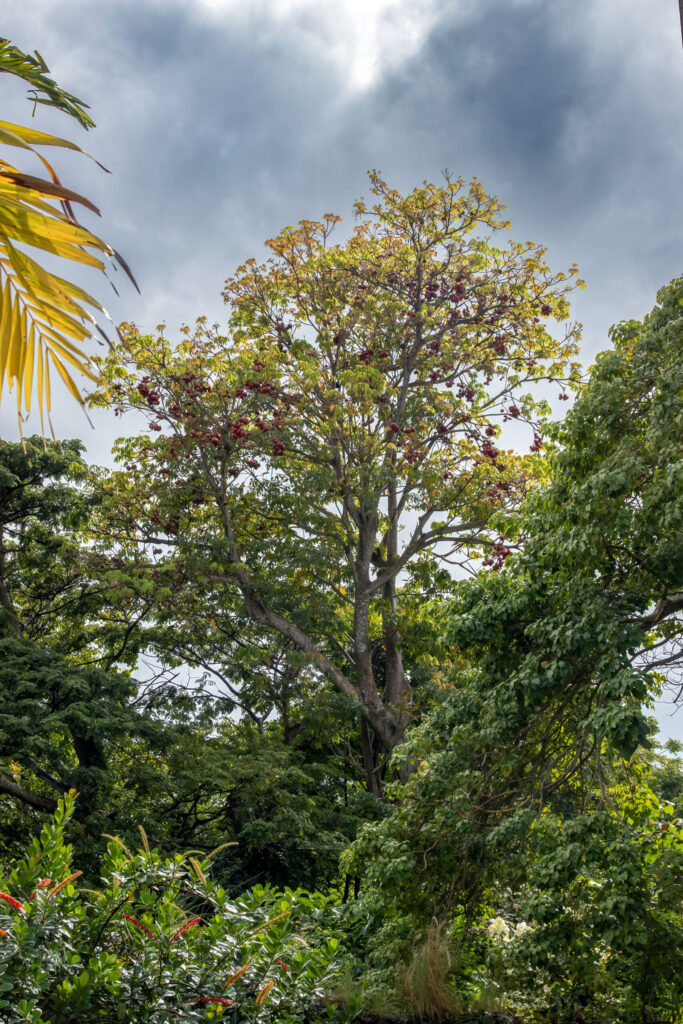
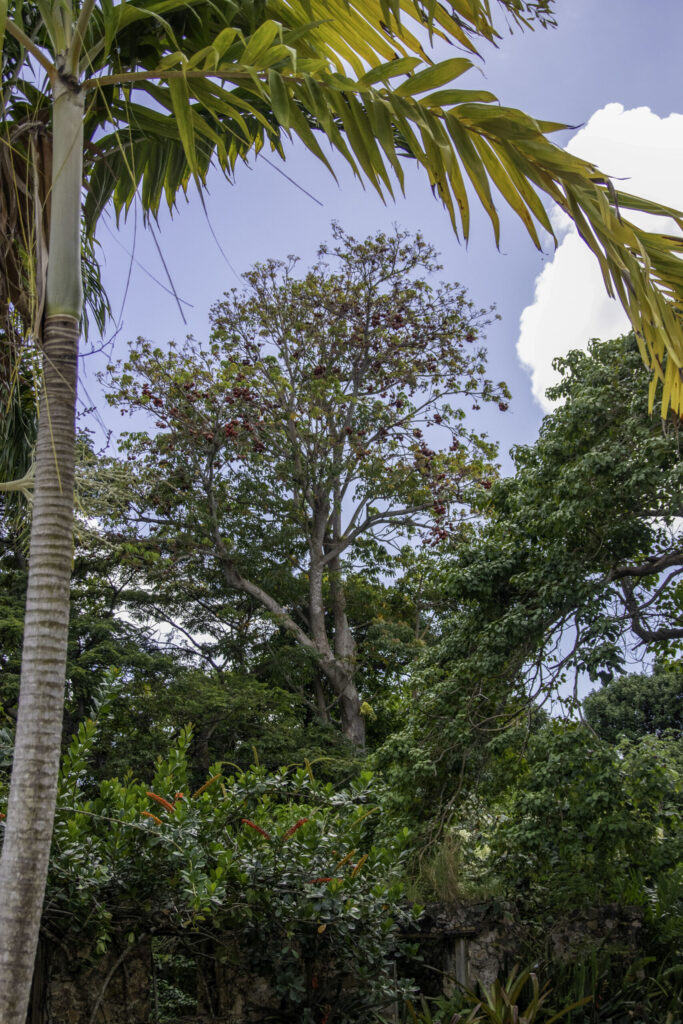
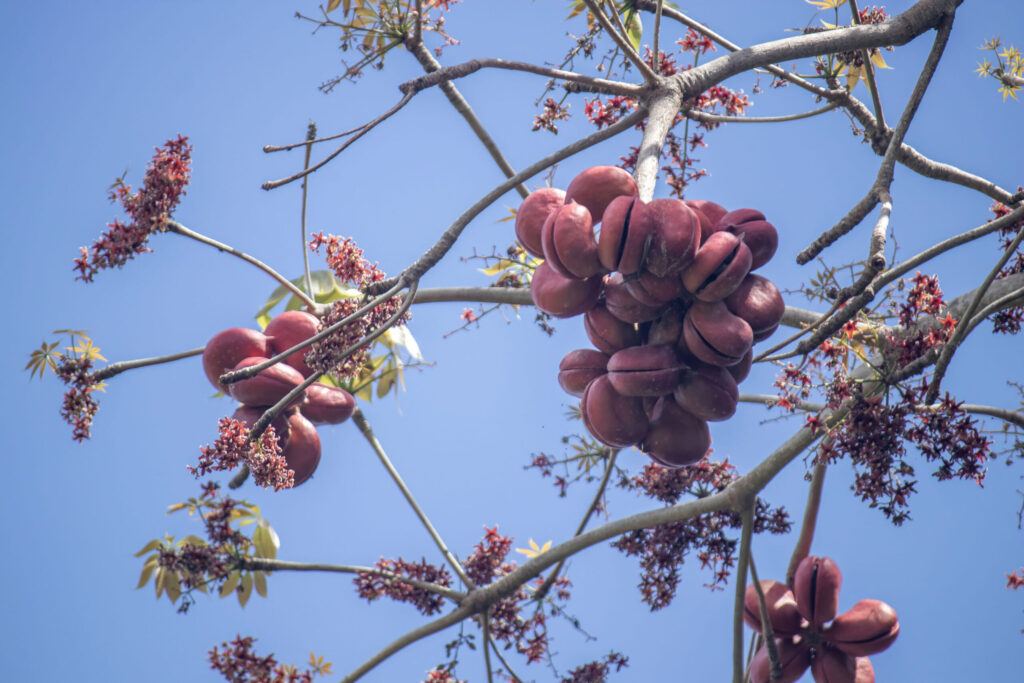
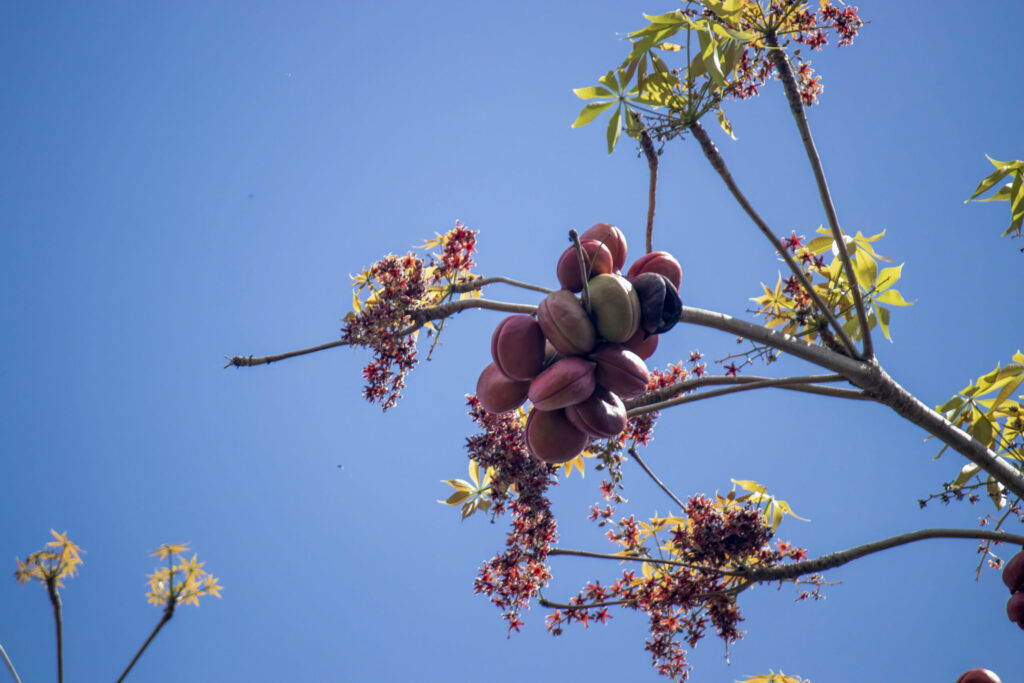
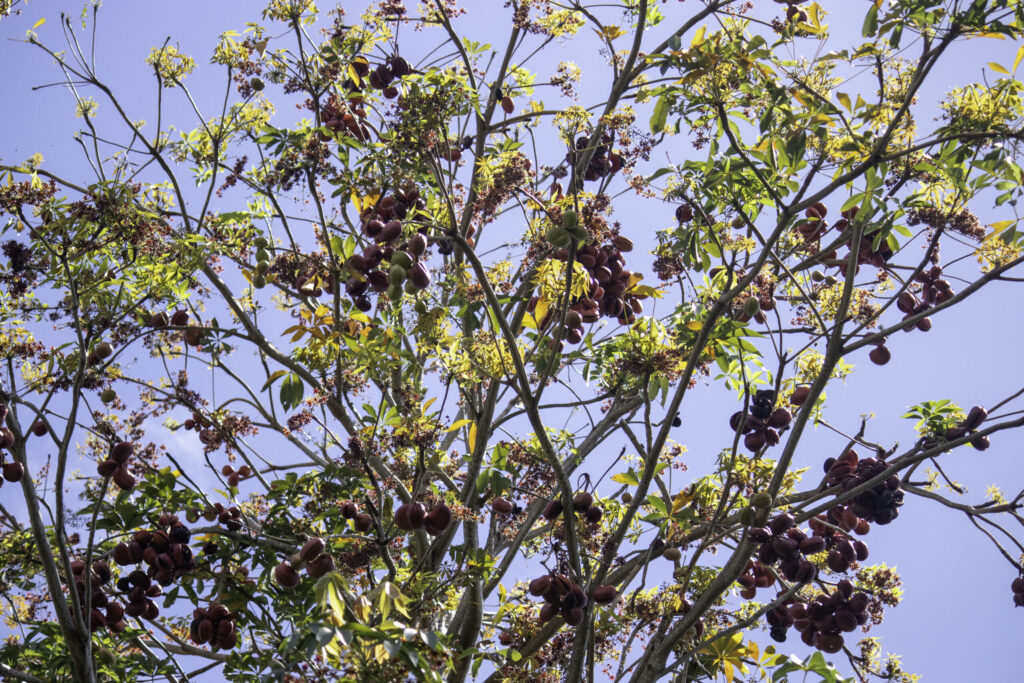
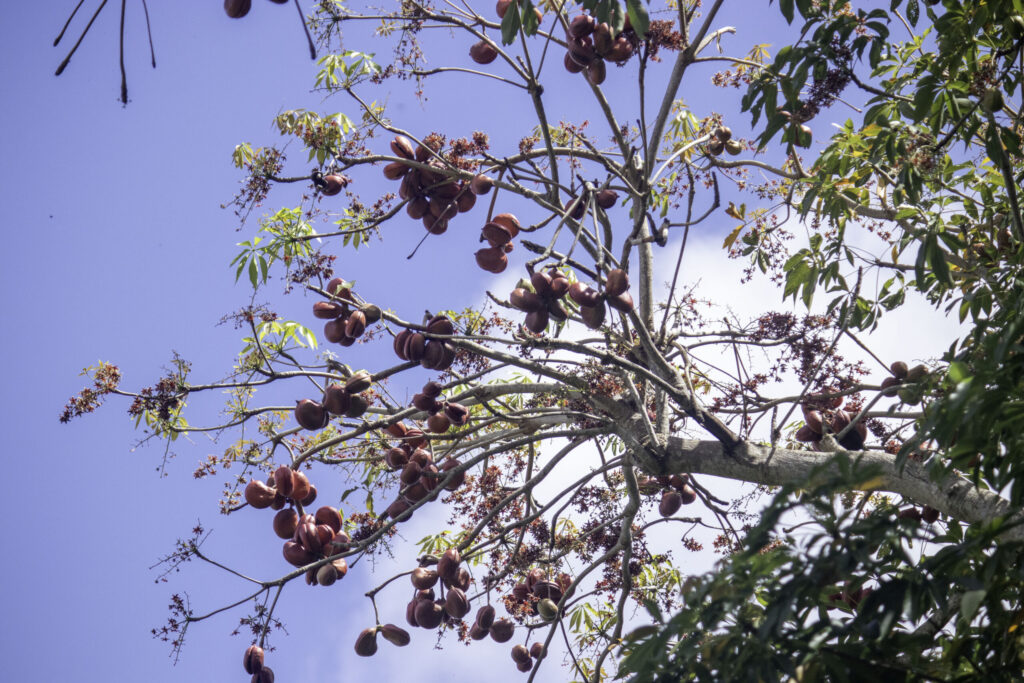
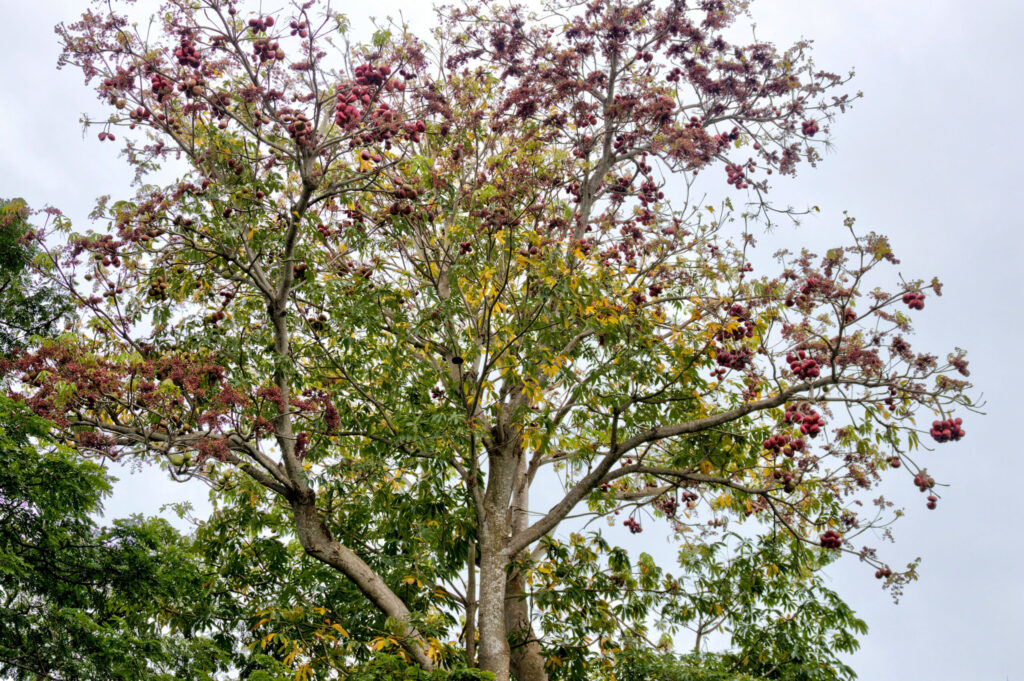
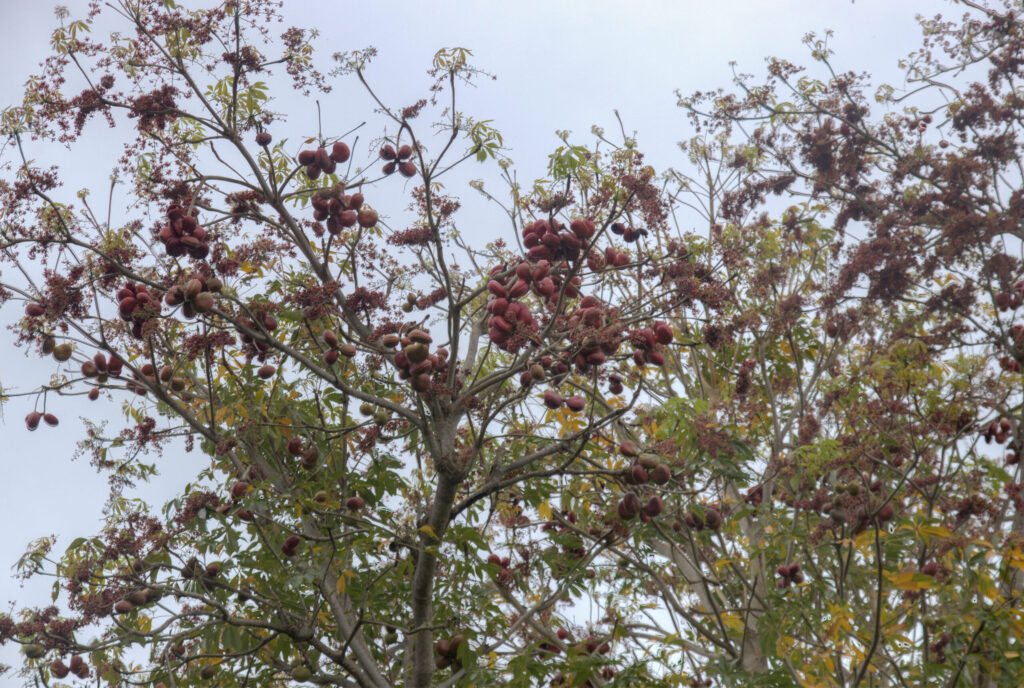




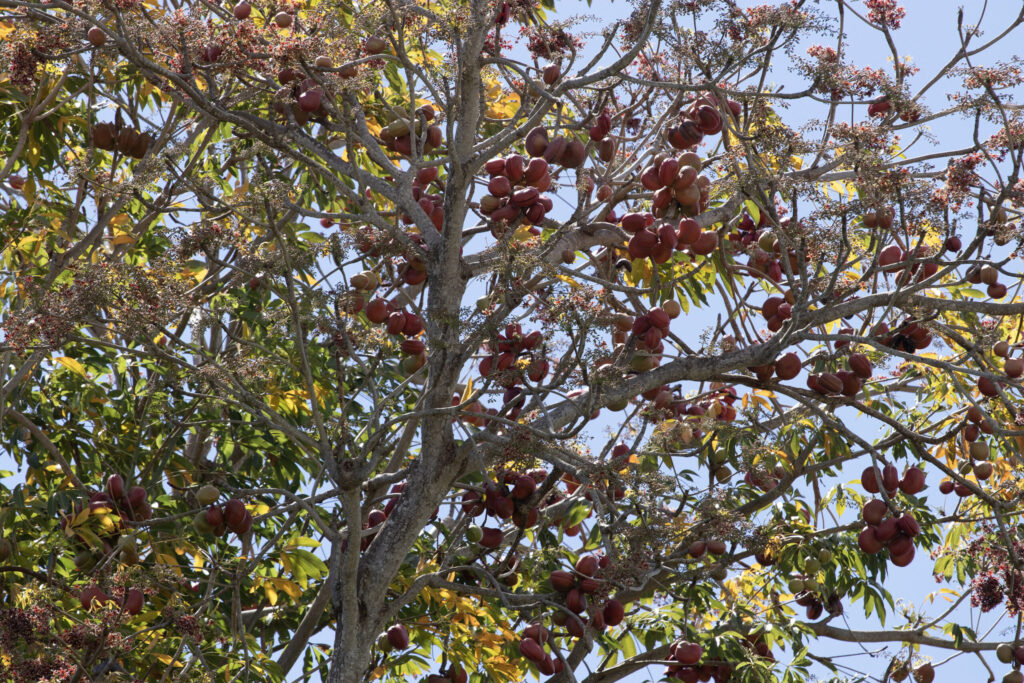
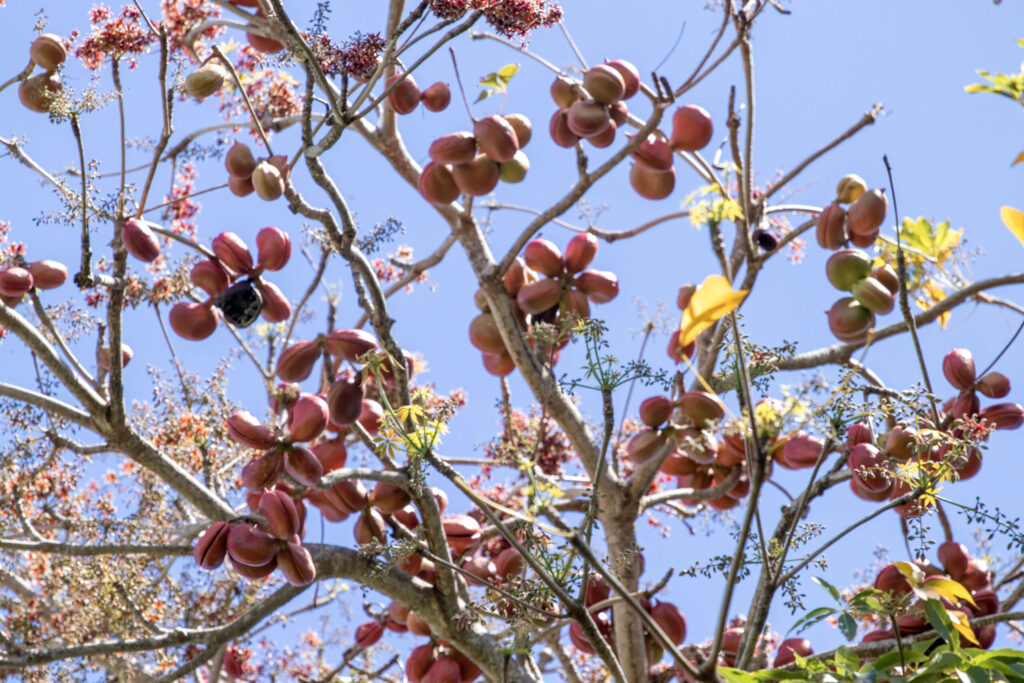

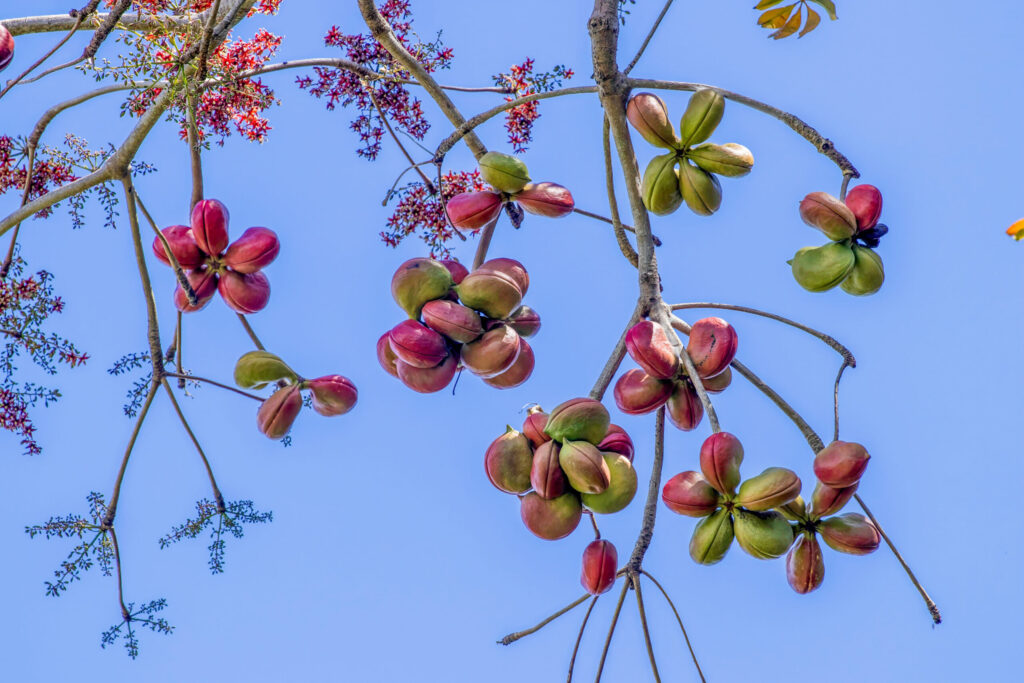
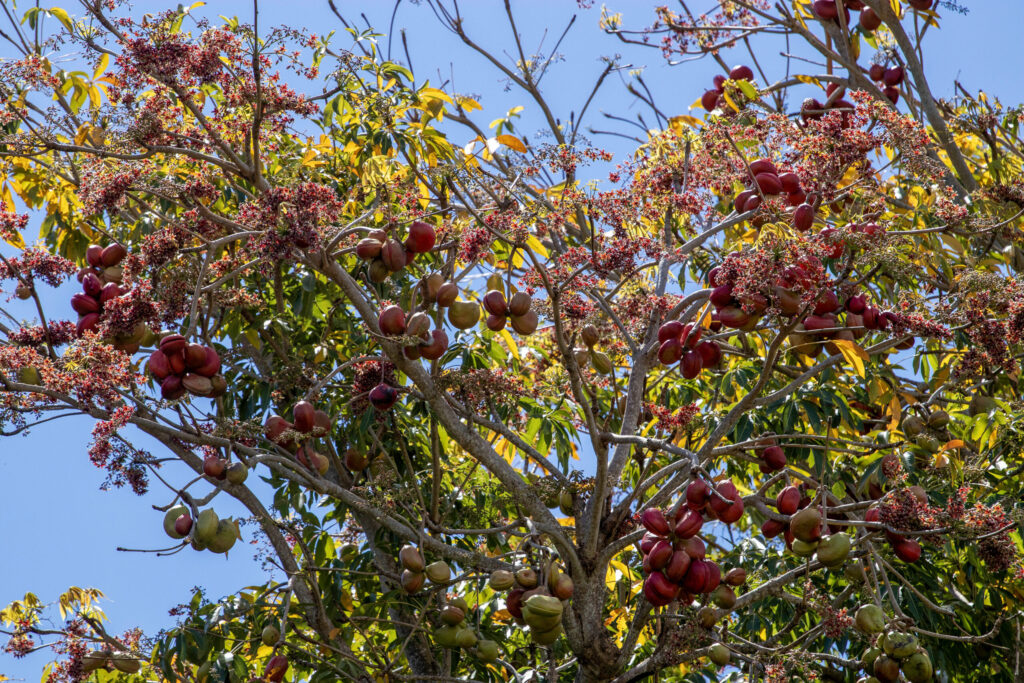
Observations:
Phenological Markers – Wild Almond (Sterculia foetida)
1. Leaf Behavior
Sterculia foetida is deciduous, typically shedding its leaves during the dry season.
- Leaves are palmately compound, usually with 5–9 oblong leaflets arranged like fingers on a hand.
- Leaf drop occurs between January and March, often preceding flowering.
- New leaf flushes emerge quickly with rainfall or seasonal shifts, typically in March–April.
Observation Tips:
- Watch for complete canopy loss during dry months.
- Record the first appearance of new leaflets, noting their bronze or reddish-green hue.
2. Flowering
Flowers are small, reddish to purplish, and borne in loose clusters at the branch tips.
- They are unisexual, and both male and female flowers are found on the same tree.
- The flowers may emit a strong, unpleasant odor, particularly in the early blooming stages.
- Flowering begins just before or during leaf flush, usually March to May.
Observation Tips:
- Track emergence of flower clusters on leafless or newly flushing branches.
- Note any odor and its correlation with flower maturity.
- Observe pollinator visits, especially flies and beetles.
3. Fruiting
The fruit is a large, woody, capsule, that splits open when mature.
- Inside each capsule are several smooth, black seeds—these resemble almonds in shape but are inedible raw and potentially toxic.
- Fruits mature from May to July, and the seeds are sometimes roasted in traditional settings after detoxification.
Observation Tips:
- Document fruit development, including capsule size, color change, and opening.
- Note seed exposure and animal interaction—some birds may investigate them, though few consume them.
4. Growth Habit
This species grows as a tall, fast-growing deciduous tree, reaching 60–100 feet in favorable conditions.
- The trunk is often straight and branch-free for many feet, topped by a rounded to spreading canopy.
- Commonly found in dry coastal forests or planted as an ornamental or shade tree in tropical regions.
5. Seasonal Pattern (St. Croix)
- Jan–Mar: Complete or partial leaf drop
- Mar–May: Flowering and new leaf emergence
- May–Jul: Fruit maturation and seed exposure
- Aug–Dec: Canopy fully leafed; rest phase or occasional light flowering
